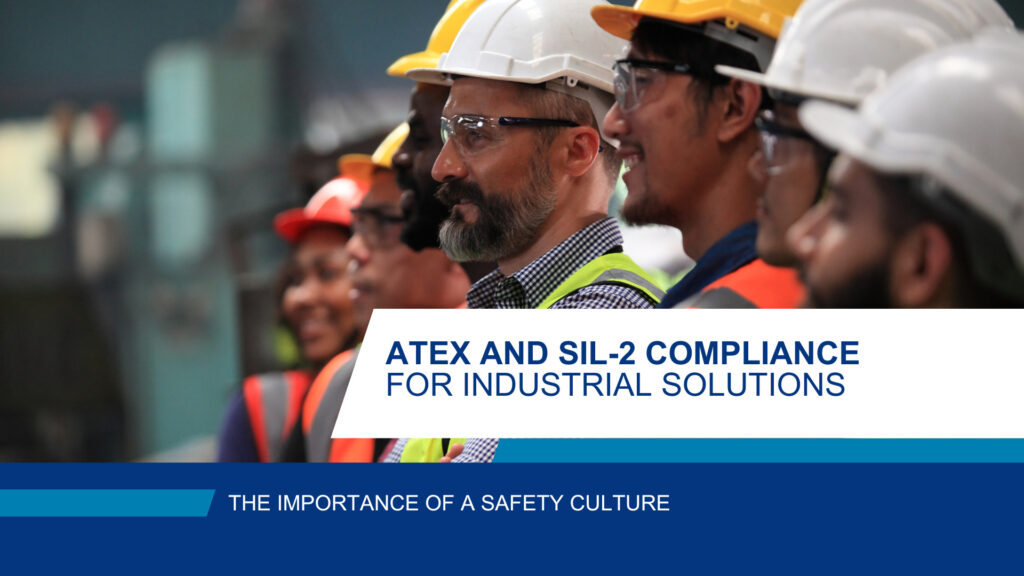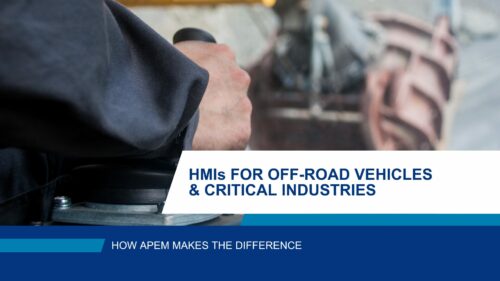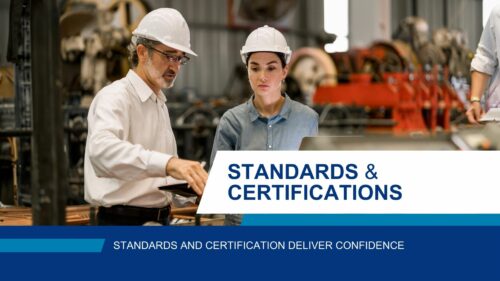The world of industry creates a dangerous workplace. From the highly automated factory floor to heavy industries such as mining, it is vital that we apply standards that ensure workers and equipment are kept safe from harmful conditions.
How Components in Hazardous Environments Must Guard Against Ignition
For specific applications, it is possible for engineers to build in safety from the start of the design process. For example, equipment destined for hazardous atmospheres can use international standards. A hazardous atmosphere is caused by the presence of a flammable substance. The mix of this substance with an oxygen atmosphere creates the potential for an explosion. Components used in hazardous atmospheres must prevent the possibility of a spark or high surface temperature that can cause ignition.

Adhering to ATEX and IECEX standards to ensure component safety in extreme conditions
To ensure this, components can be designed to comply with ATEX or IECEX standards. These standards ensure that components are tested so that they are intrinsically safe and cannot cause sparks or high temperatures that can create explosions.
The growing importance of holistic functional safety approaches

However, component-based certification is only useful for very specific situations. Users have become aware over the last few years of the need for a more holistic approach to safety, often known as functional safety. This is defined by IEC standard 61508 as the safety provided by control systems to an overall process or plant. It therefore does not focus on specific elements of safety design, such as protection against high-voltage or harsh conditions.
Instead, designers use a SIL (Safety Integrity Level). While ATEX considers the probability of hazards caused by individual components in a hazardous environment, SIL considers the type and intensity of hazards with respect to the entire system and works its way down towards how well individual components perform to best avoid the hazard. SILs are broken into 4 levels, with level 4 being the highest possible safety performance.
Comprehensive safety evaluation: the crucial role of end users in implementing effective safety systems
The critical thing to remember is that it is the entire safety system that is being considered. This evaluation is based upon the use-case and specific environment, and it is the responsibility of the end user to ensure that an effective safety system is implemented correctly. While designers can select components that deliver safe operation, it is not possible to ensure a Level 3 SIL simply by choosing SIL-rated components.
Challenges in achieving high SIL ratings: why component selection alone doesn’t guarantee safety
Challenges in achieving high Safety Integrity Level (SIL) ratings extend beyond mere component selection. While designers can leverage various standards such as ATEX and IP ratings to ensure component quality and suitability for hazardous environments, it’s crucial to understand that these certifications alone do not equate to a comprehensive safety guarantee. In fact, the misconception of ‘SIL-rated’ components often misleads designers into a false sense of security. Achieving a high SIL rating demands an integrated approach that encompasses not just the quality of individual components but also their interaction within the system, rigorous safety analysis, and consistent adherence to safety protocols throughout the lifecycle of the system. This holistic approach is essential to create robust, reliable safety systems that truly meet the stringent requirements of high SIL ratings. It’s about building a safety culture as much as it is about selecting the right components.












